I always enjoy getting feedback from my followers about all the recipes I develop and about the recipes they would like to see. A few weeks back, I had my second ‘Ask Me Anything’ session on instagram where my followers got a chance to ask me anything be it food or non food related. One of the questions that I was asked by one of my followers was a recipe for chicken stew. I love all things chicken and I quickly jumped at this suggestion hence the birth of this recipe. I decided to go all Kenyan on it and made chicken stew- kuku kienyeji.
Kuku kienyeji refers to chicken that have not been bred or raised on commercial feeds but are left to feed on whatever they find around; free range chicken. Their meat can be a bit tough, but when cooked well, it literally slides off the bone. It is all bout technique. Its meat is very lean and slightly darker in color compared to broiler. The taste is also more wholesome. Chicken stew- kuku kienyeji is simply one of the heartiest meals on the face of this earth. This chicken stew recipe contains the fresh flavor of ground coriander, green bell pepper and red onion which makes this so rich and with layers of different flavors. You will fall head over heels in love with this!
My chicken Stew Ingredients
1 large onion, diced
Salt and freshly ground black pepper
1 Whole kienyeji chicken
4 chopped tomatoes
1 tablespoon tomato paste
1 large green bell pepper diced
1 bunch chopped fresh coriander
5 cloves of garlic
1 teaspoon of black pepper
Chicken Stew Preparation
First things first: slaughter your chicken. After the chicken has been slaughtered, remove the feathers (duh!). This process can be made easier by soaking the chicken in some hot water, which in turn softens the base of the feathers making removal of the feathers very breezy. After the feathers have been removed. you need to roast the chicken (very important step!). This eliminates any oduor and imparts a smokiness to the flesh. That smokiness is a quality I enjoy.
There after, chop your chicken into sizable pieces and put it to boil until the meat is tender. Kuku kienyeji takes a bit longer to get cooked compared to broilers. You can also use a pressure cooker if you want to cut down on time taken to get it boiled. You will know that it is ready when it begins to slightly slide off the bone. Do not go too extreme as the chicken will turn into shreds.
In a separate sufuria, saute your onions, black pepper, garlic and half of your until they are soft. To this add your tomatoes, the remaining bell peppers and the tomato paste and let this saute for about 5 minutes. To prevent your tomatoes from sticking to the pan and to create a thick sauce as the base of the chicken, add 1/4 cup of water or vegetable stock to this. Always add a bit at a time, never flood with water the chicken as the stew will be too light. You can also add some white wine for that extra flavor kick.
Let this simmer on low heat so that all the flavors sink, amalgamate in and the chicken tenderizes even further. The chicken will attain a beautiful into a stew consistency after about 8-10 minutes. In our home, we boil our kuku kienyeji with some Munyu Musherekha, which not only amplifies the flavor but also further tenderizes it. We also add some during the stewing process, just a couple of tablespoons to really bring out it’s flavor.
I know you may be thinking, what on earth is Munyu Musherekha?!! Let me explain:
***
Sherekha is a salt which also doubles up as a tenderizer widely used by Luhya people to add flavor and make certain foods softer or more tender. It is made from the ashes of burnt sun-burned dried bean pods or sun-dried matoke peels. The ash is then put in a perforated tin with some water and left undisturbed. The water drains through the perforated tin without debris but contains a lot of the sought after sour taste and alkalinity.
The resultant liquid is the musherekha. To tenderize, our kuku kienyeji (and kunde and sometimes meat too), we boil it with it. It is not compulsory, but makes a world of difference when used. In my opinion, it is a MUST HAVE for every kitchen.
***
Add your finely chopped coriander mix it in then take it from the heat immediately after. I like my kuku kienyeji with very little spices, and just fresh herbs so that the natural sweetness of the meat can stand out and shine through. This is one kind of meat that needs very little for it to be delicious.
After you are done, ladle the stew into serving bowls and serve.
How delicious does this look…. This would be absolutely fantastic with some rice or hot ugali or with your favorite starch. Besides this chicken stew dish, you can also check out my other chicken recipes: 3 spice golden fried chicken, & spice and crunch tender chicken wings
You can also use this exact recipe with a whole chicken cut up into pieces. Also, try this with some white wine and tell me how it tastes 🙂 🙂
Cheers!
-K
Download the full recipe here:
All content and images are copyright protected by

Do not copy in part or whole without giving due credit.
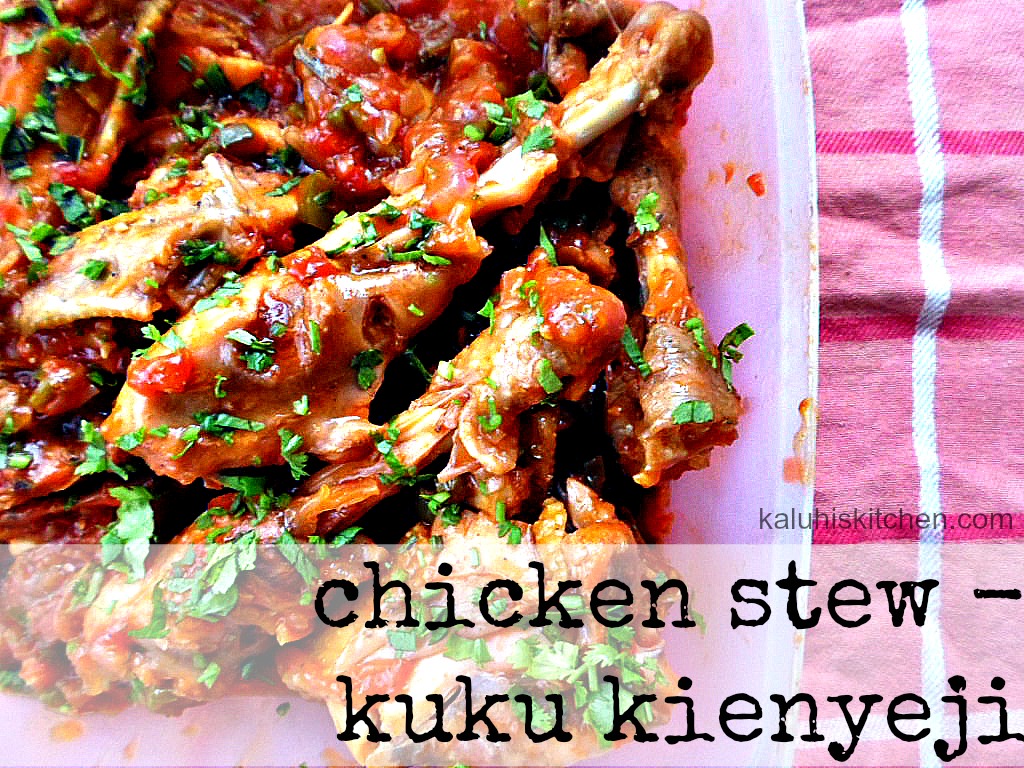
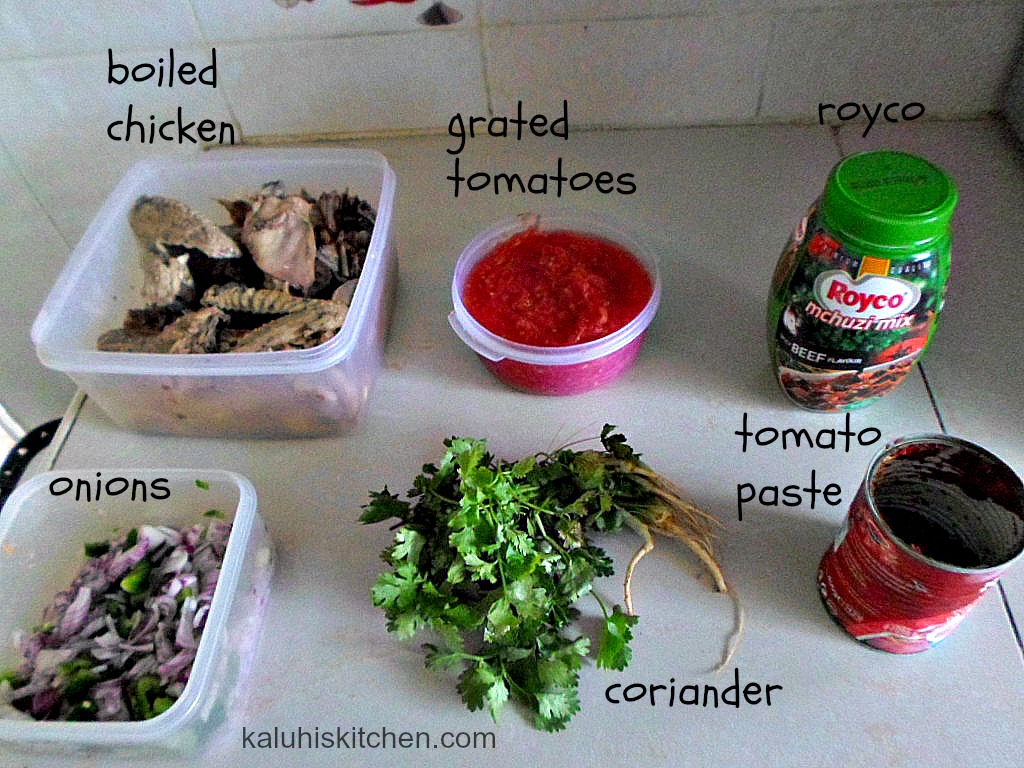
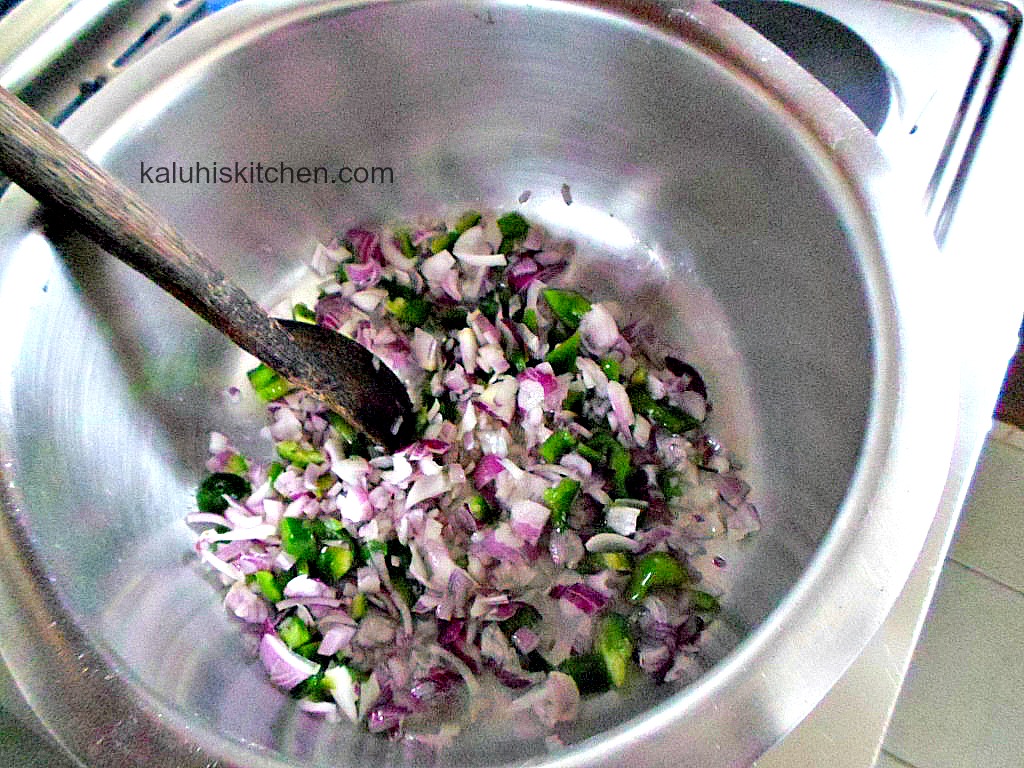
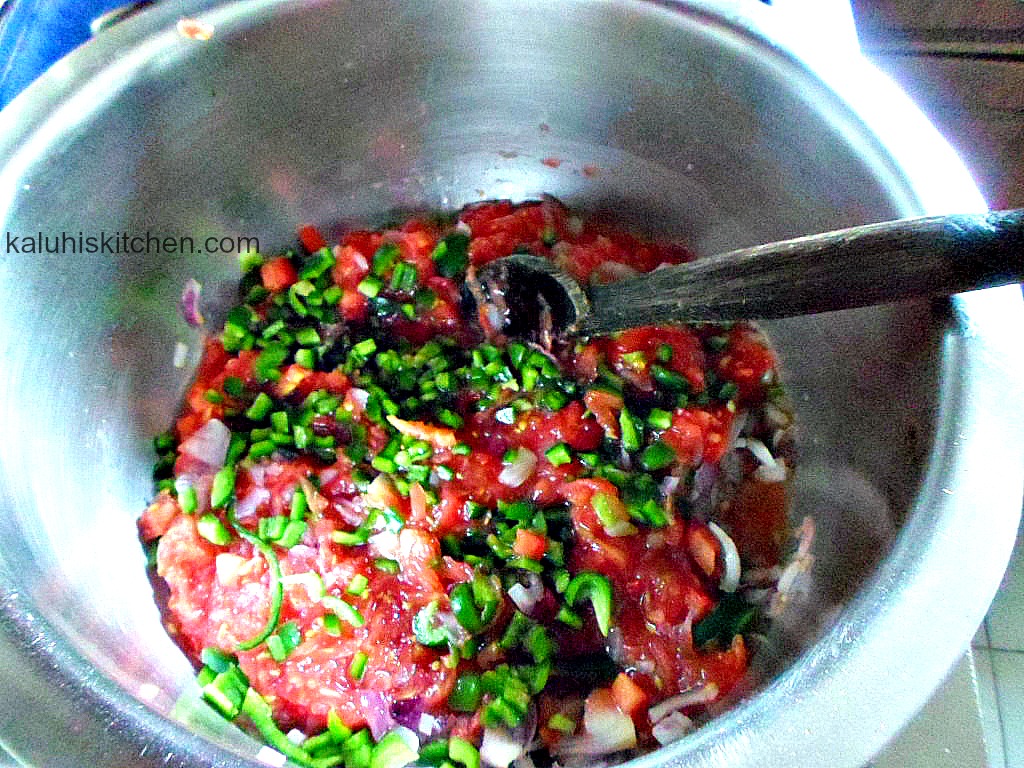
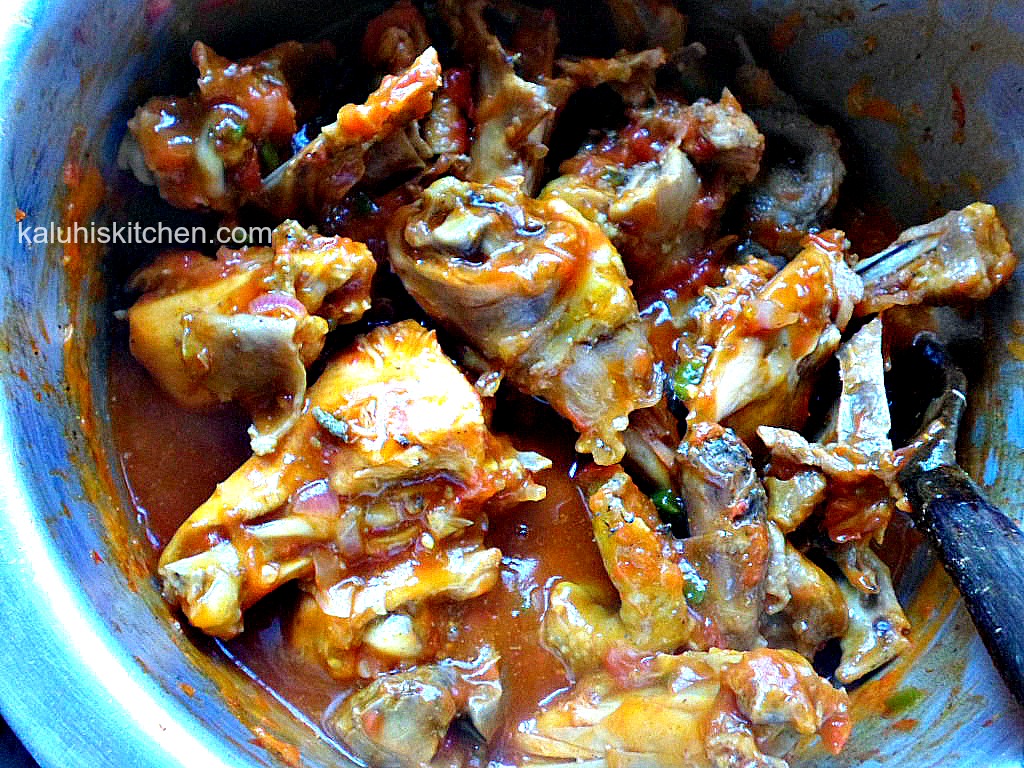
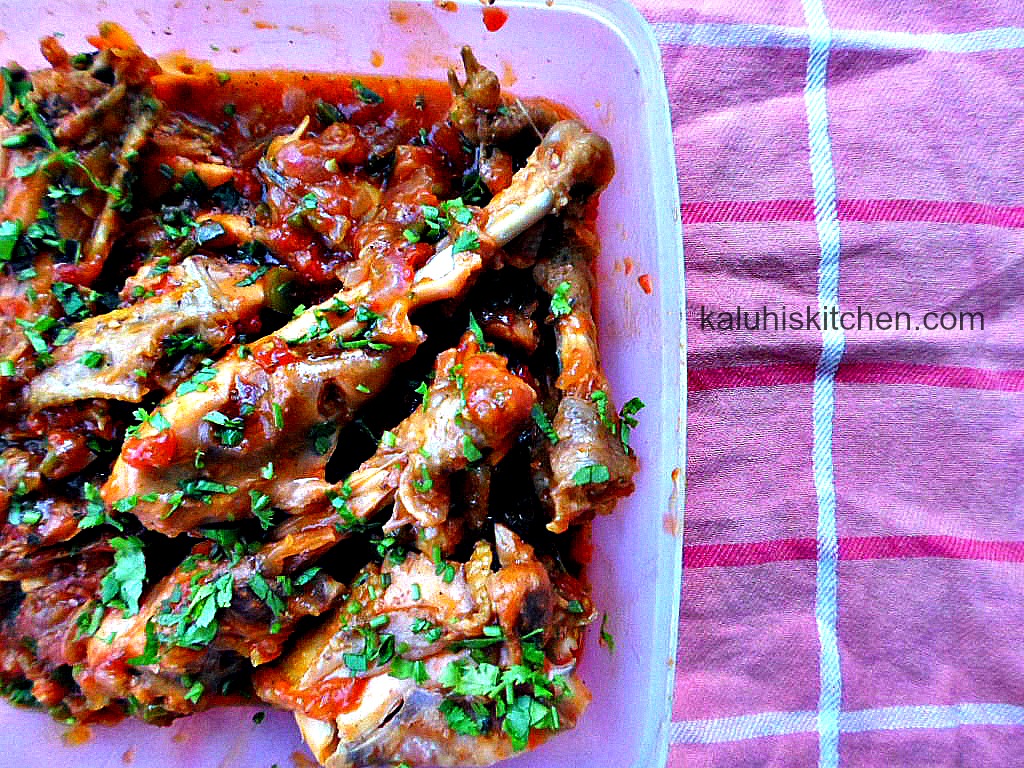
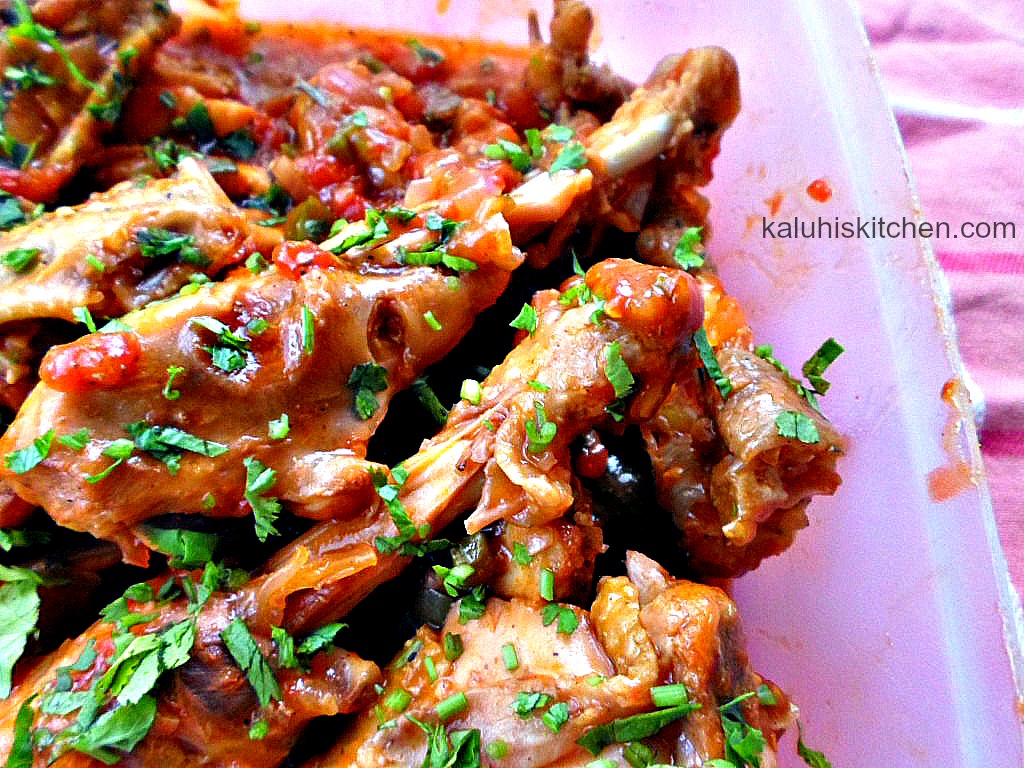

 Hey there! My name is Kaluhi and I love food! Through my blog, I am happy to share with you my self-taught recipes, steeped in nostalgia and the happiest of memories. I hope each recipe you try out is as addictive as the previous one and is shared on a table full of love and hearty laughs!
Hey there! My name is Kaluhi and I love food! Through my blog, I am happy to share with you my self-taught recipes, steeped in nostalgia and the happiest of memories. I hope each recipe you try out is as addictive as the previous one and is shared on a table full of love and hearty laughs!





Same method for broiler chicken ama
Also could you share how to make sticky bbq chicken
It can work with broiler. The only thing i would request you to add is maybe 1/2 a teaspoon of rosemary, 5 cloves of garlic and some chilli according to your level of preference to make this super tasty :))
How much white wine to be used? Dry or sweet?
dry white
Did you add the Royco mchuzi mix to this recipe? If so, how much should i add
I added about 2 heaped tablespoons. But you can always adjust it upwards of downwards depending on the quantity of your chicken.
Am definitely going to try this tonight, will give the outcome moro, but am sure it shall be well
Awesome! Looking forward to your feedback! Take pics and tag me on Social Media
Hi Kaluhi. No where in the recipe are we directed to add the chicken into the onion tomato mix. Help for male bachelors😂
After the tomatoes are done, add the chicken. Imagine do not overthink. It is EXACTLY as you would cook any other stew. Just breath, relax, do not overthink, and just cook <3
when did you add the kuku?
After the tomatoes are done, just like any other stew.
Firstly I prefer sealing the chicken on a hot pan. Make sure its golden brown and retains it juice.
Boil using star anice, onion, garlic, cloves, carrots, leeks and celery. Simmer for 1 hour at low heat.
This created a tasteful, flavorful aromatic chicken stock for the stew.
Later put you pan on heat add choppen onion let it brown add your chicken plus tomato paste and onion. Cook until brown then add garlic, ginger and the stock we made. Simmer for 2 hours under low heat or put it in oven…
Cool! You are very much free to stick to whichever method works for you. I prefer to cook mine as shown in the blog post. There are many ways to kill a bird (pun intended :D) and that is what makes cooking fun 🙂
Hey. I came to your page to check out chicken stew recipes and landed on this one.
While I enjoyed it, I noticed quite a bit of mistakes with sentence structure and a few steps were missing , e. g. when you added the Royco and when you put in the chicken. Kindly review your pieces before posting for a better reading experience.
Thanks!
HI,
How do i roast the chicken? {you need to roast the chicken (very important step!). This eliminates any oduor and imparts a smokiness to the flesh. That smokiness is a quality I enjoy.}
You roast it on a jiko. Kawaida normal jiko; it’s what I use. I am sure you use a jiko too since I feel like you know the process…
Which vegetable is cooked using musherekha?
All traditional vegetables (kanzira, mtoo mrenda, managu etc)
I tried this, it worked out well. Eventually am the chef of the moment in my house
And may you get better and better!
Hey 👋 where to get msherekha? And does it go by any other name?
We make ours at home. It is a luhya term, does not have any other term in other languages, just vague direct translations/descriptions